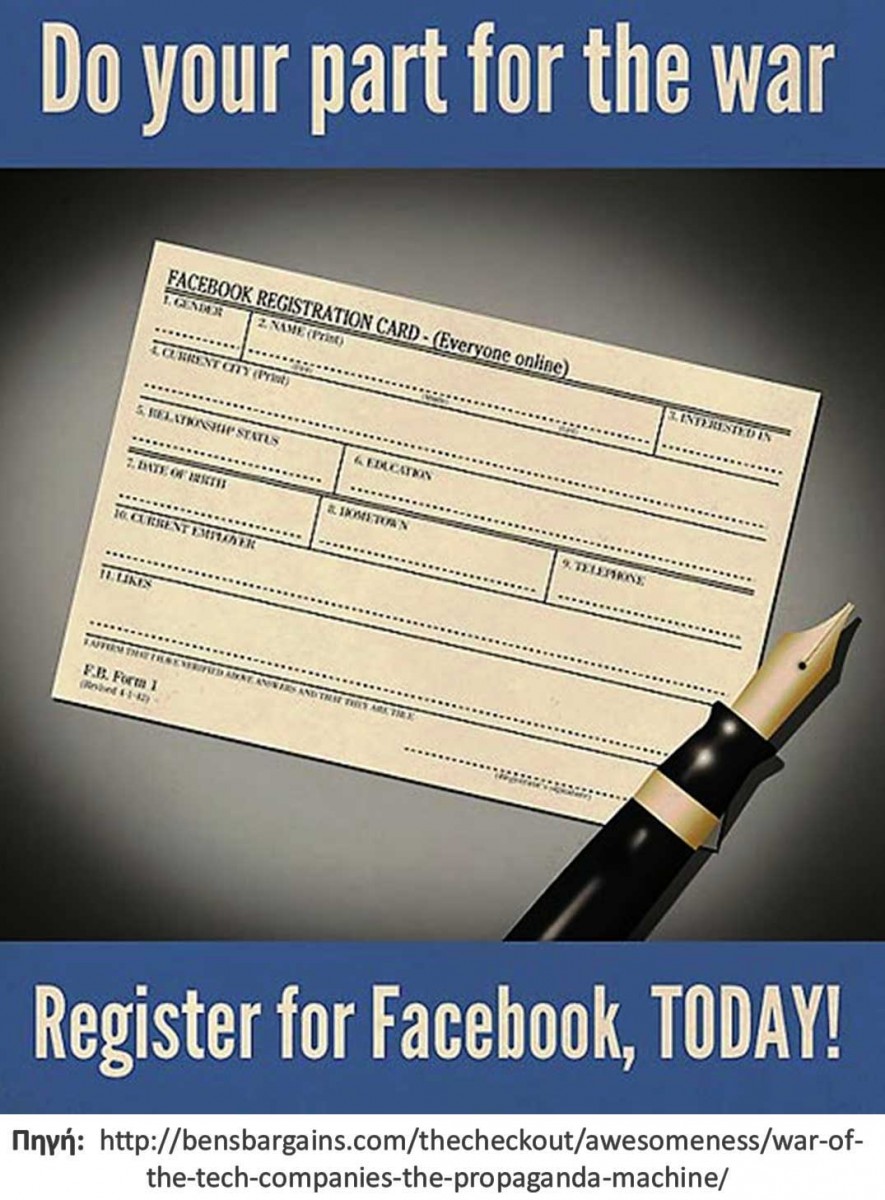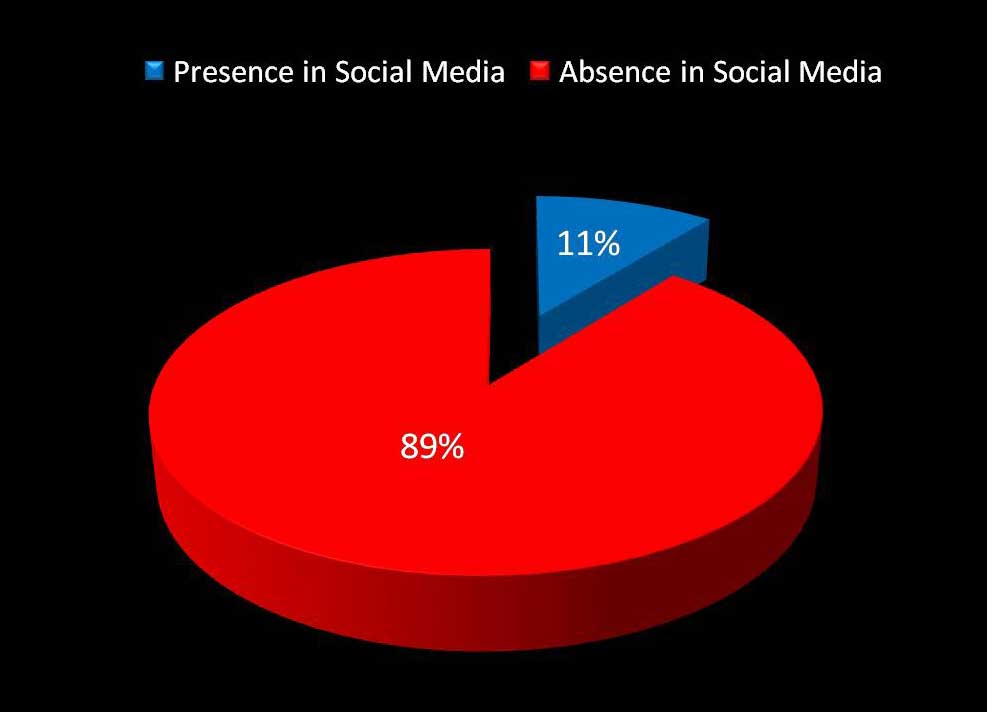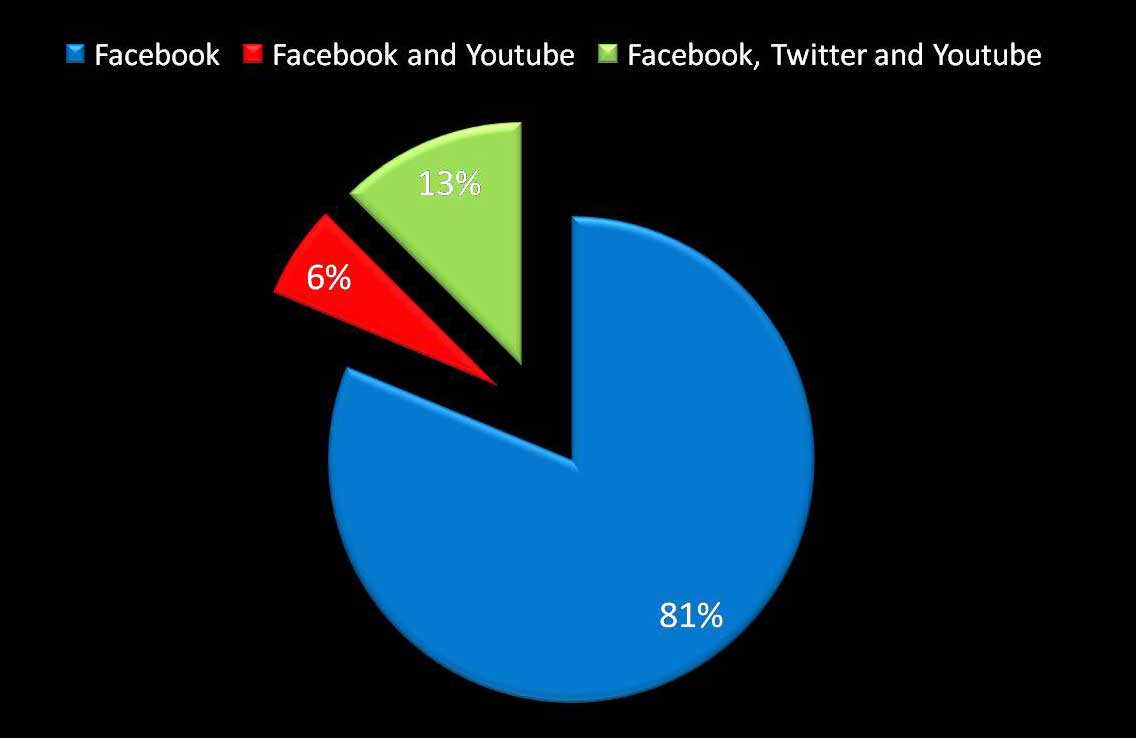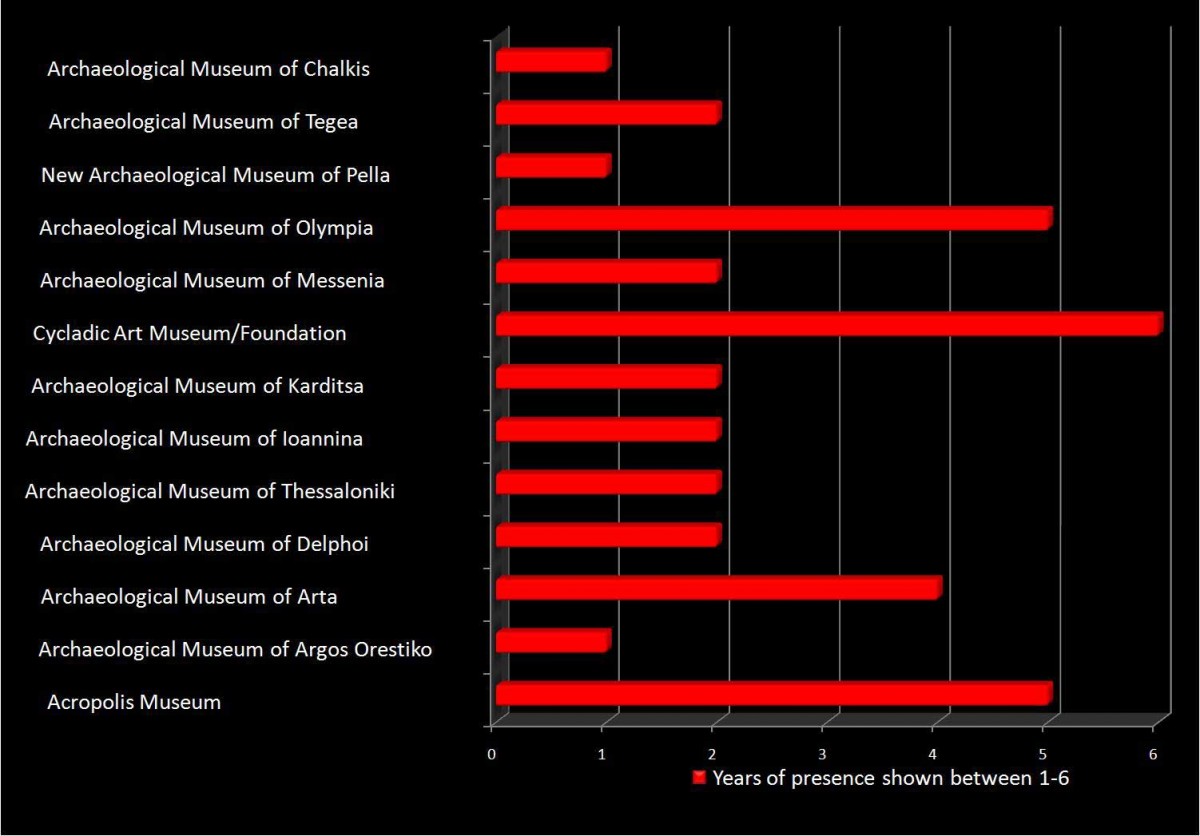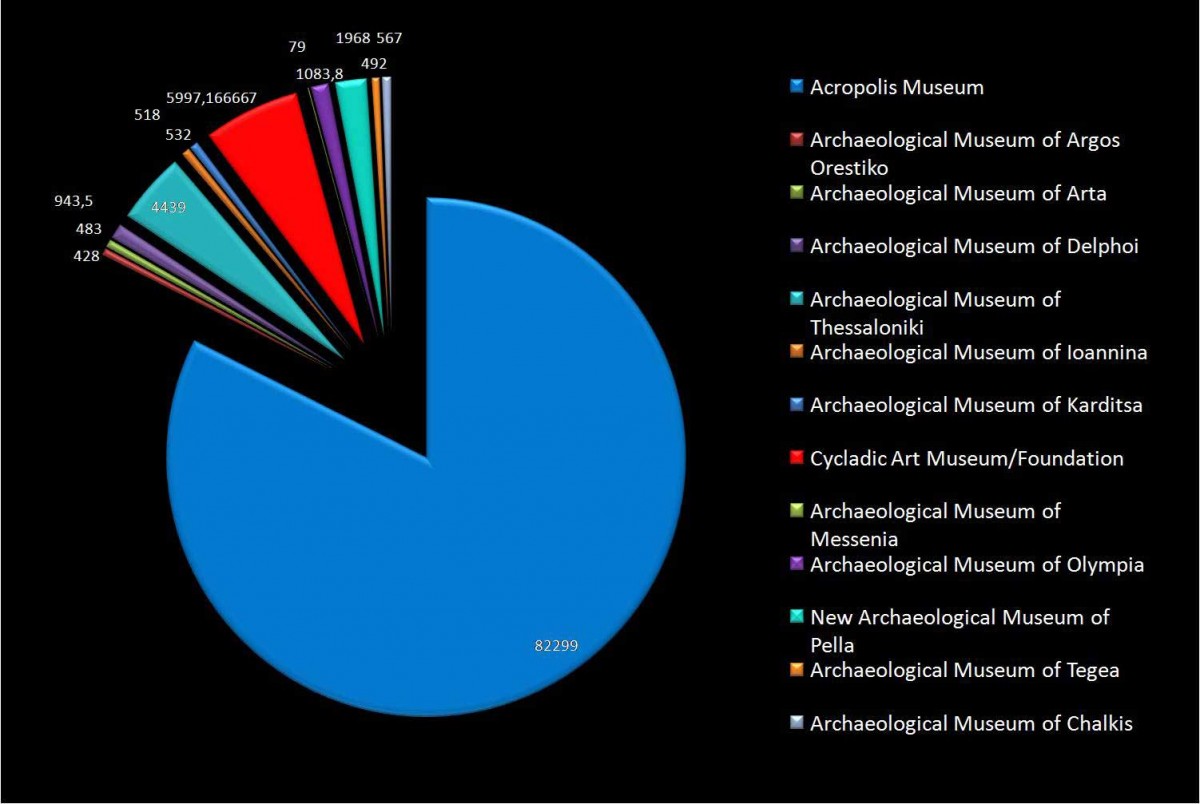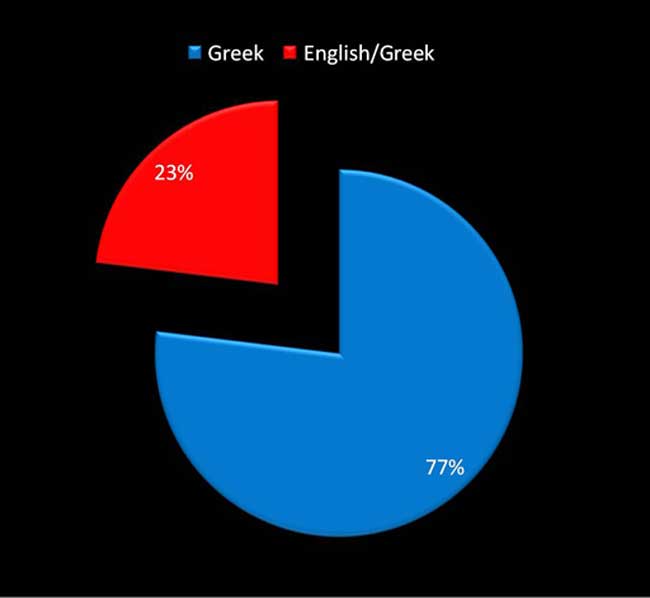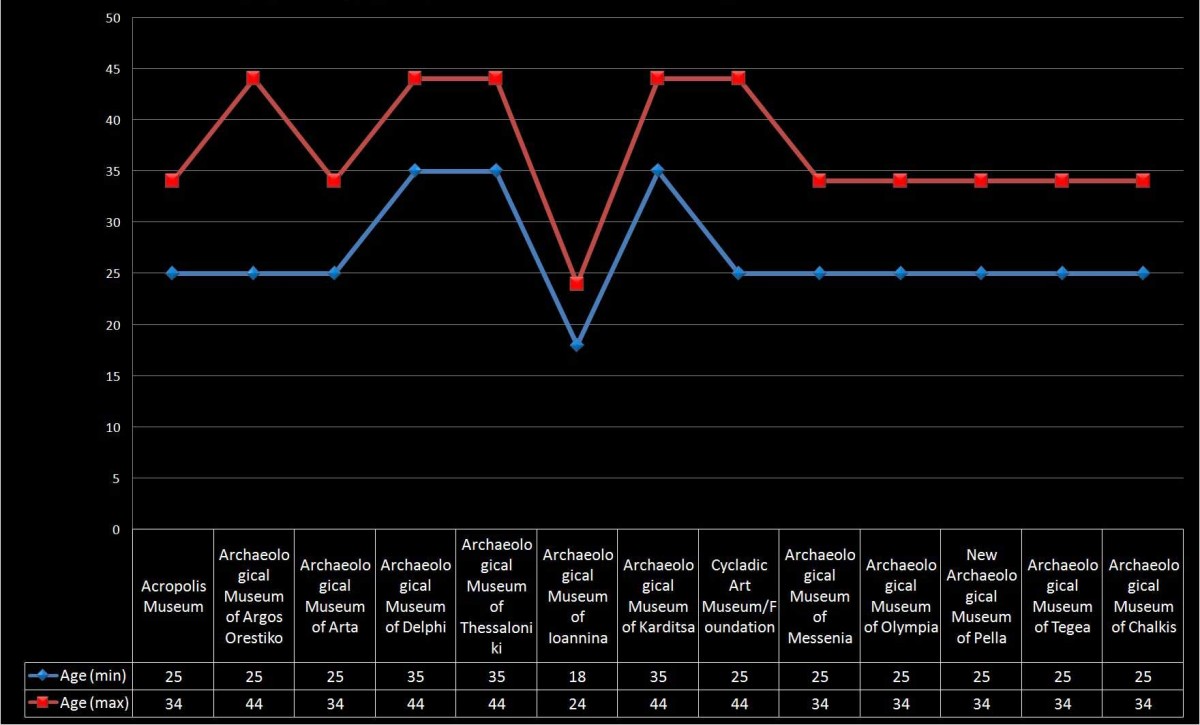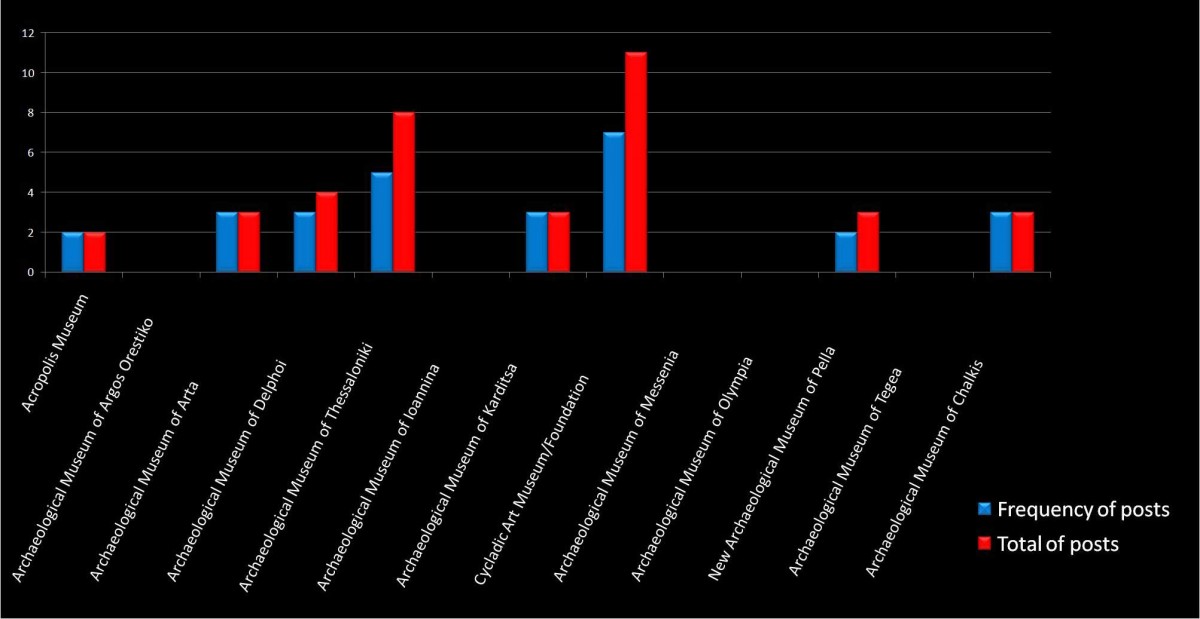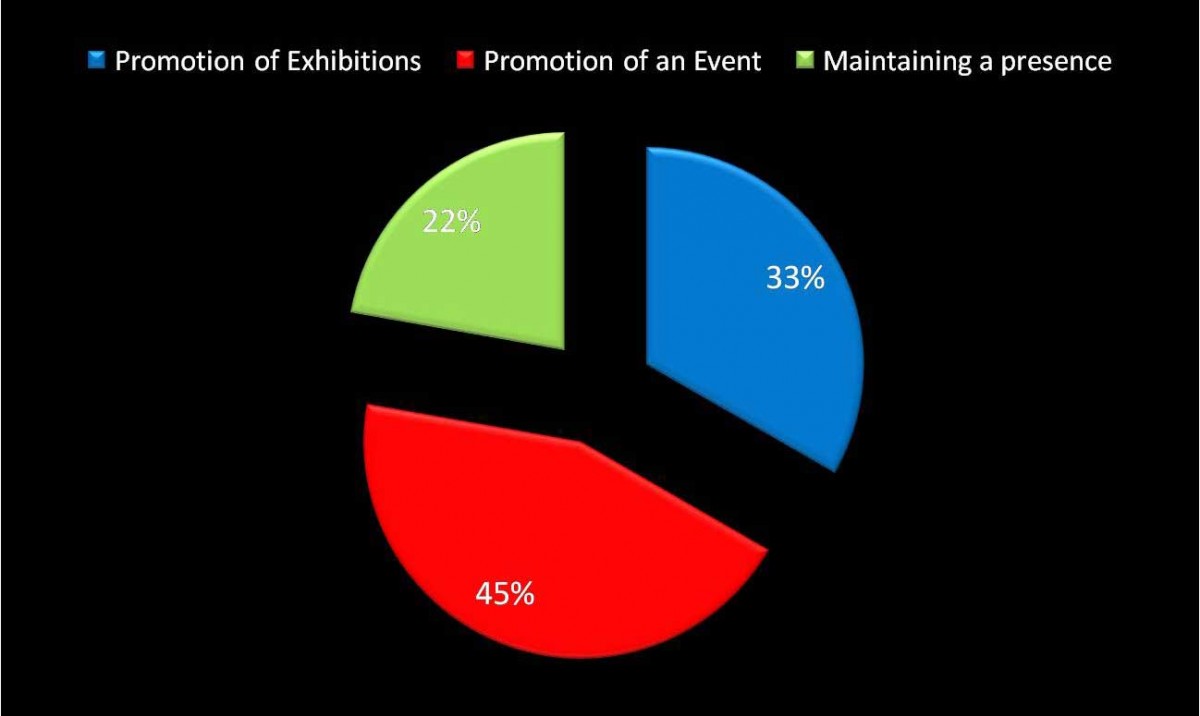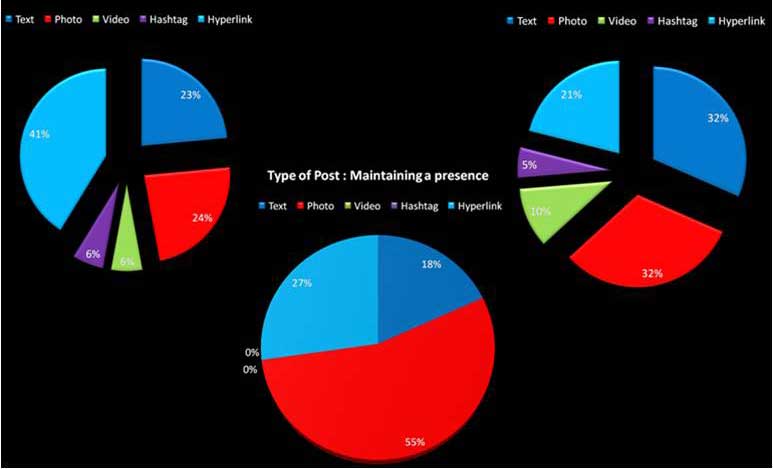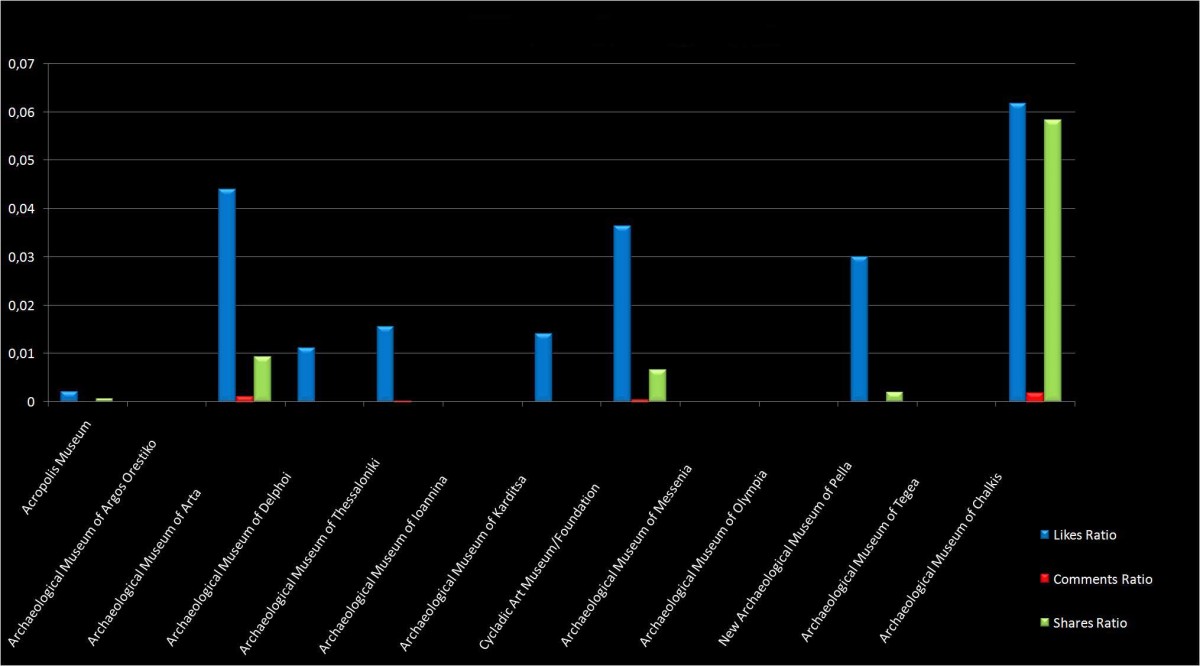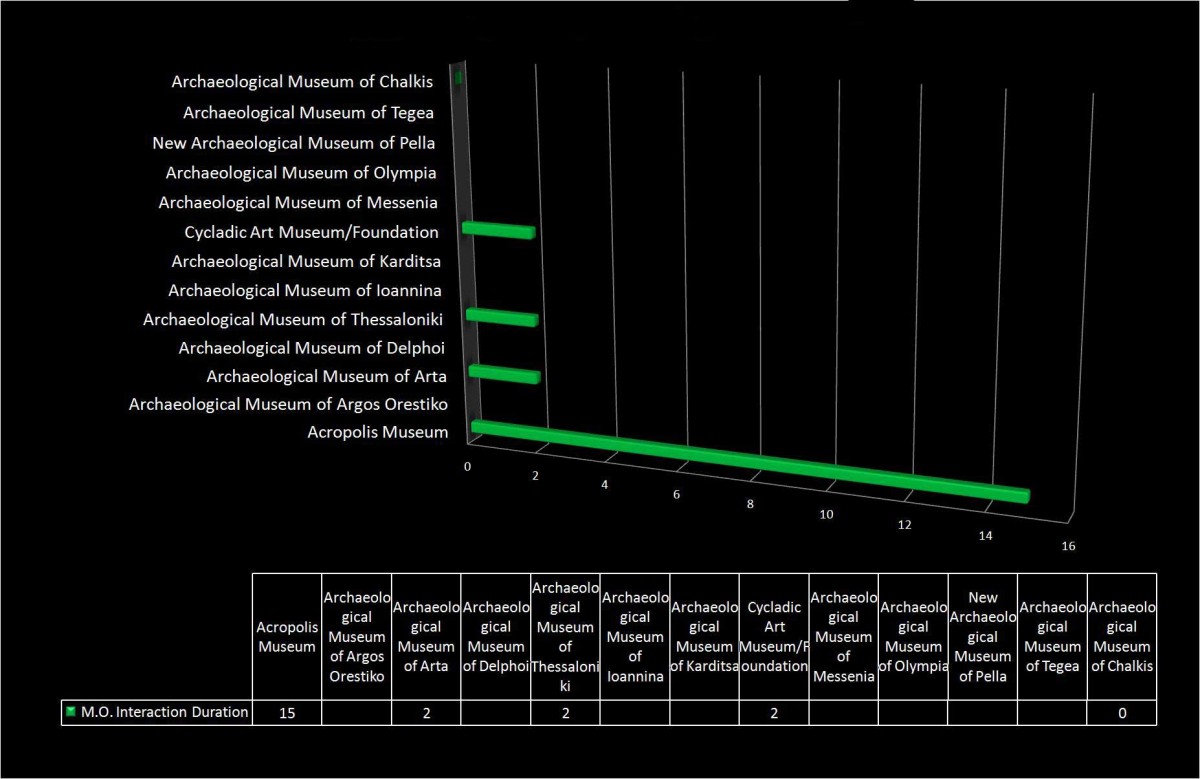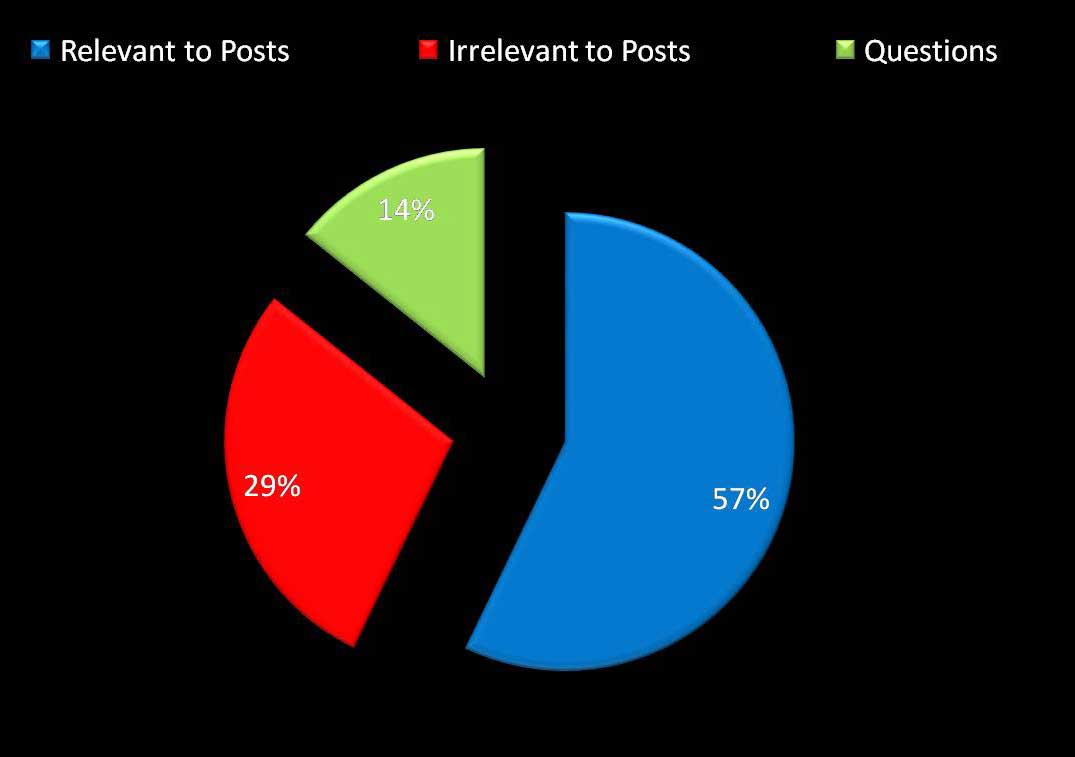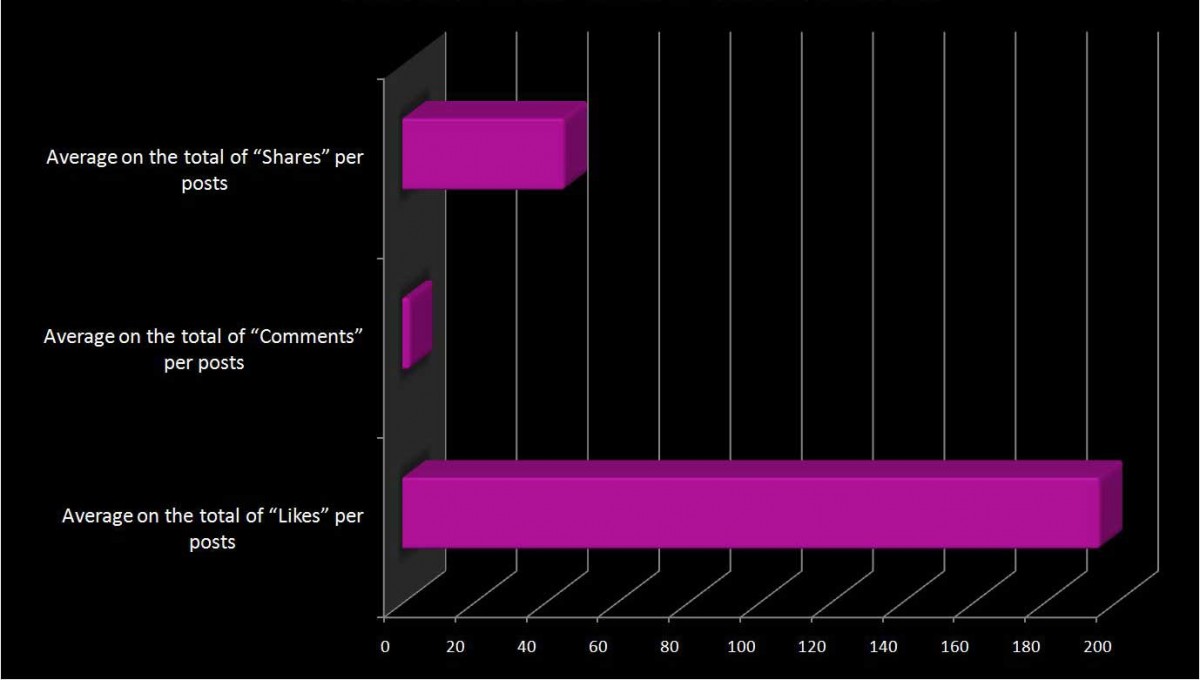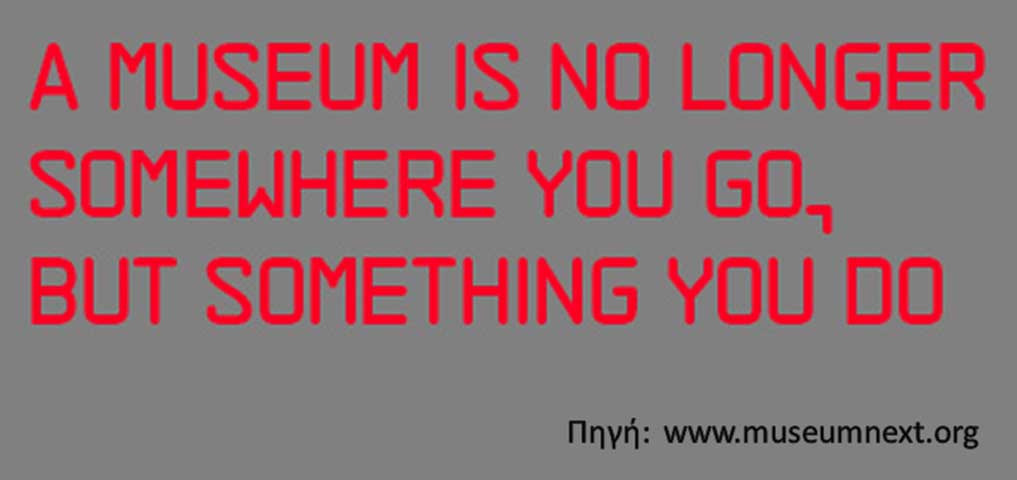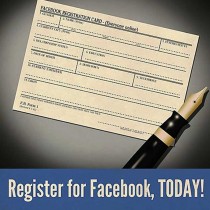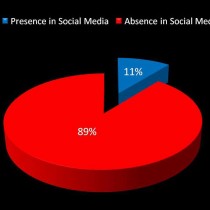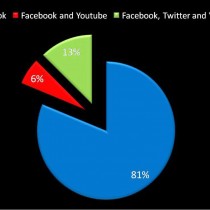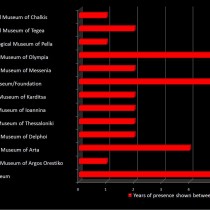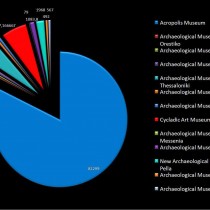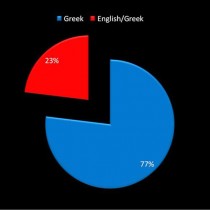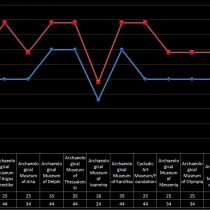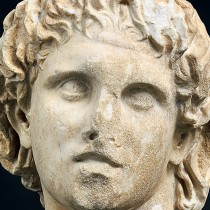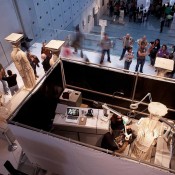Introduction: museums and social media
Museums utilize social media to communicate and create new social relations. Social media are used both by individuals, collectives and institutions almost all over the world for communication and are said to overcome restrictions such as age, gender, class as well as actual distance, ideologies etc. On the one hand, social media are considered to be an example of the “victory” by individual users, over organized forms of communication, the mass media and other mediations and mediators recording, among their positive aspects, the users’ initiative and the possibility of individual as well as collective interaction. On the other hand, they are considered a typical example of egocentricity expressed through specific practices (e.g. posting personal material and forcing an interest in the self) and facts creating a “banal” method of communication in insignificant trivia (Drotner & Schrøder 2013, 2).
On their part museums are asked to redefine their models of communication, through the potential offered by these media. Specifically, to switch from the model of transmitting information from the institution to the user/visitor to one where the initiative in seeking forms of communication now belongs to the user/visitor. Namely, instead of the visitor expecting the institution to offer him opportunities for communication he can seek these out in a spontaneous and active manner (Παυλίδης 2000, Μπαντιμαρούδης 2011). Apart from these media being a technological addition to the already structured (and seemingly immovable) forms of communication used in cultural institutions, it is important to understand that these technologies fit more organically in issues of communication, interaction and exchange (see also Black 2012, Simon 2010, Μούλιου 2010, Μπούνια forthcoming). In other words, these types of new possibilities in communication invite museums to find new answers to questions on what they are communicating, how and with whom, where is this communication carried out and to what aim. This procedure requires a fundamental change on the part of the museum in its perception of the public: instead of individuals or collectives that understand information and enjoy entertainment by essentially collecting the museum’s services, we are now talking about co-creators of communication procedures (Drotner & Schrøder 2013, 4).
For the time being, social media reinforce the museum’s presence where both real and potential visitors have already established contact networks, are actively participating in communication activities and not just concentrating all their efforts on one place and its website i.e. on the museum.
Bearing in mind the above and recognizing that Greek museums have only recently started efforts to join the world of social media and are searching for any changes this integration entails, we attempted a preliminary survey on the best use of social media by Greek archaeological museums.
The survey started from the three most popular social media, Twitter, Youtube and Facebook, each of which belongs to a different category. The first falls under the category of blogs and specifically to micro-blogs which are websites where users are invited to create and share brief personal comments. The second belongs to the category of “media-sharing sites” i.e. websites that allow users to post, assess and comment on mainly visual material. Facebook, the last of the three, on which this survey finally focused, as will be seen further on, belongs to the most popular category of social media, the so-called “Social Network Sites” or SNS. According to Boyd and Ellisson (2008) this type of social media allows individuals: a) to create a public or semi-public profile within a certain system, b) to draw up a list of other users with whom they share a bond and c) to view and penetrate the lists of links made by themselves or other participants in the system. In this category of social media emphasis is placed on communication symmetry – since the appearance and exchange of social contacts is at its heart (Lomborg 2011).
Facebook is a “cheap” way of promoting museum activities by the “word of mouth” method and addresses the 18-24 and 35-44 age groups that are attractive to museums. The two basic principles that shape the services of Facebook are free exchange and connection as well as the free flow of information. Correct use of the platform is connected with how effectively a museum uses the marketing and communication tools provided, while offering statistics on the pages’ content. Undoubtedly, therefore, this service offers a museum the opportunity: a) to establish relations with the “non public” and strengthen its relations with the existing public, b) to strengthen collaboration, c) to cause active participation, d) to share information with a wider public and finally, e) to contribute in enhancing the visitor’s account.
There are two basic reasons for choosing Greek archaeological museums as a sample for the present survey: one of them is the specific role they have in the consciousness of Greek society as being essentially identical with the broader concept of the museum, while the other is that they predominate in terms of numbers over all other museum categories.
The Survey’s Objectives and Methodology
The survey’s basic aim was to confirm whether and in what ways Greek archaeological museums make use of the potential of social media as described above. We chose to examine the pages and accounts of users officially belonging to cultural institutions and not of those belonging to individual users, friends and supporters or institution employees, without, however, an official authorization for such representation.
Specifically, 122 Greek archaeological museums were looked up, using their official Greek and English titles, in the search machines of the specific networks (Twitter, YouTube, Facebook), and it was found that just 11% are engaged in one or all of the above networks (Graph 1).
Out of the “active” museums only 6% hold an active account in all three platforms and almost a double percentage has an active account in two out of three networks. It is worth noting that all “active” museums choose to communicate with other users via the platform of Facebook (Graph 2).
These preliminary findings led to the next phase of our survey, which focused on a detailed investigation of the use by museums of Facebook, the most popular platform, as well as the repercussions of these activities on the reactions of those users who follow them over a random period of fifteen days, long enough for us to study their movements. The interval between the 10/3/2014 and the 25/3/2014 was set as the period for a systematic monitoring and study of specific pages on Facebook.
Recording and grouping data from museum profiles on Facebook
The recording and grouping of data was divided into 3 stages:
1. Data on general characteristics of museum profiles. A record is made of the data of the profile’s creation, the total number of the profile’s “Likes”, the total number of individuals who “talk” about the museum in its profile, the information the museum gives about itself and the language (note 1) it uses, as well as the age of the target group following the profile.
2. Quantitative and qualitative data on the activity of the administrator (the museum). Quantitative figures are recorded such as frequency (note 2) and the type of publications that was divided into: a) promotion of the exhibition, b) promotion of the event and c) maintaining an appearance on the platform to be continuously in touch with the public and qualitative figures through communication tools used in publications, namely a) text/photo/video b) hashtag and c) hyperlink.
3. Quantitative and qualitative data on user response where the following aspects of their profile are studied: age and degree of commitment, reactions to the information given them, type of information that most captures their attention and response to stimuli for interaction offered by the administrator (the museum). Quantitative data is researched for results, per publication, such as the total of “Likes” (note 3), “Shares” (note 4), “Comments” (note 5) as well as interaction time. The qualitative data studied are the types of “Comments” divided into: a) relevant, b) not relevant, c) questions.
Results and conclusions
Next, taking into account the three stages of the recording and grouping of data, these were processed and studied so as to draw conclusions for each museum included in the survey. Based on initial results, a correlation of these is being attempted in order to understand the general practice of archaeological museums, utilizing social media and especially Facebook.
Data on general characteristics of museum profiles
Opening an account
Starting this survey, the data was initially recorded of each museum’s decision to join the service’s network. The majority has been participating with an active account over the last two years (2012-2014) while the Museum of Cycladic Art and the Acropolis Museum pages that are six and five years old, respectively. In Graph 3, are recorded both those archaeological museums with pages on Facebook and the years of their presence on the network.
Considering that the service began in 2004, we can confirm the slow reflexes of Greek archaeological museums to this new form of communication. However, it is worth noting that almost since it first started operating (2009), the Acropolis Museum has included Facebook in its communications policy.
An indication of users’ interest in the museum accounts
Compared to the number of friends of museum accounts, it was found that the account of the Acropolis Museum holds the Lion’s share, while followed with some difference by those of the Museum of Cycladic Art and the Archaeological Museum of Thessaloniki (Graph 4).
The language used
Regarding the language, the majority of museums uses only Greek (Graph 5) suggesting unwillingness or, most probably, the inability to utilize possibilities of reaching a wider public located beyond the country’s narrow boundaries, or not sharing the Greek language.
Target age group
Moving on to the grouping of demographic data offered by the service, the age group that follows the online activities of museums (Graph 6) was approached. Although museums are more popular in the 25-34 age group, it is worth noting that the Museum of Ioannina account is more popular with younger ages (18-24) while the account of the Museum of Karditsa attracts the age group of 35-44 year olds.
Therefore, it becomes clear that age restrictions often referred to in the case of utilizing social media (namely that these media primarily address the digitalnative generation) is not entirely accurate. On the other hand, the 18-24 age group, the one that is “difficult” to approach, really does seem to be more attracted to creating contact with a museum by these media
Facts on the activities of the administrator
Account activity
During the period in question, 69% of the museums showed some activity, as opposed to 31% who did not engage in any. The resulting data indicates that museums can be divided into two categories: those that do not follow the “one publication per week” method and those that both follow and enrich it. Five of the thirteen museums showed no activity during the two weeks, while the rest posted some kind of information or material between two to seven times (Graph 7).
Consequently, most museums seem to be following the service’s advice of one post per week, which in our opinion shows that the majority of museums wish to retain their online contact with the public.
Posting content
Regarding the content of posts, museums prefer to announce the events they organize, then the exhibition itself, while a smaller percentage is taken up by posts that wish to maintain the museum’s presence, such as an uploaded image of the museum accompanied by the text “Good morning and have a good week” (Graph 8).
Posting methods used by museums
When studying the way museums choose to communicate posted information, it was found that they used text, photo and video, individually or together, while it is common to use the Hashtag application that helps promote dialogue, as well as the Hyperlink that serves the free flow of information to and from other platforms. Consequently, communication is enriched and achieved in an interesting manner.
Regarding the promotion of events and exhibitions, museums utilize all of the five available ways (Graphs 9-11), while for maintaining their presence they use only text, hyperlink and photographs. Overall, video and Hashtag are used far less. This latter piece of data seems to indicate to us either reluctance, ignorance of the medium or possibly the failure to involve the users in a dialogue reaching a wider public. Basically, this observation is related to the qualitative aspect of the medium’s utilization, to which we will return later.
Effectiveness achieved by users’ actions
Response to publications
Having first collected the quantitative data related to the users’ responses, we next tried to study the latters’ ratio to the total of friends of each account so as to confirm if the users were active and to what degree. In other words, if and how much does the use of the new medium alter the perception on how the cultural institution communicates.
As is made clear in Graph 12, the users who react to posts choose more to express their preference and share information with others rather than getting involved in a dialogue. A very small percentage express their views in writing or asked something related to the post.
Ways of responding to posts
Another interesting fact deduced is the ratio of the total number of friends to the number of those choosing with one of the above manners to respond to museum posts. Popular museum pages such as that of the Acropolis Museum, have a very small percentage of responses in proportion with its large number of friends. On the contrary, less popular accounts, like that of the Museum of Chalkis shows a large percentage of responses by users, always in proportion to its total of friends.
Response time to posts
Although in terms of numbers the users’ feedback is small, it was thought interesting to examine the time factor of their particular interaction, i.e. approximately the number of days the users “chat” or comment on the post from the moment it appears in the account. Moreover, while on most pages interaction begins and ends in one or two days, the case of the Acropolis Museum stands out noticeably as it managed to hold the users’ interest for approximately fifteen days (Graph 13).
Content of users’ comments on the posts
Regarding the quality of the content of the users’ comments, all their posts were carefully studied and an effort was made to place them in three categories. The largest percentage of feedbacks are related to the content of the museum post or regards some clarifying question addressed to the administrator. There are, however, a number of comments around 20% that have no relation to the posted information e.g. in a post referring to the organizing of group workshop activities, among relevant comments and questions on this event, irrelevant comments also make their appearance, such as e.g. “Hi to everyone in Athens, Greece” (Graph 14).
Other ways of engaging users in posts
Last, the concentrated diagram in Graph 15 sums up the users’ responses and shows us the levels of engagement and commitment to the museum profile. The great majority of users wish to have casual relations with the museum, mainly by using the “Likes” application.
Only a few consider the posts’ content to be interesting enough to share with their friends thus allowing the museum’s account to become known to a wider public, while only a tiny number shows signs of marked engagement by presenting its views and being exposed to a public dialogue.
Conclusions
From the data collected during this survey, conclusions indicate that the majority of museums examined in the sample have not included modern forms of communication in their policies even if they do have pages on social networking sites.
Those of the museums in the sample that are actually on social media seem to primarily deal with Facebook. This, understandably, leads to the conclusion that facebook is the most popular social networking application for those museums in the sample that opened up their horizons to new forms of communication. Nevertheless, the low figures observed in the diagrams reveal that the involvement of these particular museums with social media does not indicate, for the most part a dynamic presence in this specific social networking application as examined and the consequent change of approach regarding communication that an active use of these media would indicate. Generally speaking, it is observed that the lack of systematic care of their Facebook accounts by the museums themselves (moderators) naturally results in their limited online popularity, as in this context no encouragement for interaction is given to users. Exceptions to this case are the Acropolis Museum and the Museum of Cycladic Art. Possibly this fact could be related to the actual popularity (and frequency of visits) regarding the museums examined, in the consciousness of Greek society.
To conclude, we could say that the performance on facebook of the museums in the sample, reflect the conservative communications policy widely adopted by Greek archaeological museums. Results from the present survey show that museums are more interested in keeping the public informed about their current exhibitions and events, rather than get involved in a dialogue or create strong ties with it. In other words, social networking sites are mainly used for their potential for “news to arrive quickly” and also to reach those groups in the public that no longer use newspapers and other media. Social media are not used, however, for their potential to engage the public in new, more creative and intensive acts of communication and co-creation with the museum.
The Greek museum community has, therefore, quite a long road ahead and needs to activate people both familiar with the new medium and knowledgeable about it but also gifted with a fresh perception of museum communication.
Efthimia Theochari, Conservator of Works of Art, Graduating student of the Interdepartmental PSP “Museum Studies” at Athens University
Danae Kousouri, Historian, Guide, Graduating Student of the Interdepartmental PSP “Museum Studies” at Athens University
Lorena Beleri, Conservator of Antiquities, Graduating Student of the Interdepartmental PSP “Museum Studies” at Athens University
Alexandra Bounia, Associate Professor, Department of Cultural Technology and Communication, University of the Aegean
Vasilis Datsioudis, Conservator of Antiquities, Manager of Church relics, Student of the Interdepartmental PSP “Museum Studies” of Athens University
Aggeliki Partsinevelo, Epistemologist, Graduating Student of the Interdepartmental PSP “Museum Studies” at Athens University
*The research presented in this article was part of the postgraduate course “Museums and the Public” of the Interdepartmental PSP “Museum Studies” at Athens University, in the academic year 2013-2014, with A. Bounia and A. Nikiforidou as coordinators.
